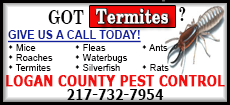|
Engineer in New Jersey train wreck later
diagnosed with sleep disorder
 Send a link to a friend
Send a link to a friend
 [November 17, 2016]
By David Shepardson [November 17, 2016]
By David Shepardson
WASHINGTON (Reuters) - A lawyer for the
engineer of a New Jersey commuter train that crashed in Hoboken in late
September, killing one person and injuring more than 100 others, said
his client has since been diagnosed with severe sleep apnea, which can
cause drowsiness.
The disclosure came six weeks after officials of the National
Transportation Safety Board (NTSB) said the engineer had told
investigators who interviewed him that he was fully rested at the time
of the train wreck but had no memory of it.
Jack Arseneault, a lawyer for the engineer, Thomas Gallagher, told
Reuters on Wednesday that after the crash his client was "examined and
tested and found to have severe sleep apnea."
NTSB spokesman Christopher O'Neil said he could not confirm whether the
engineer suffered from sleep apnea, but added the agency was looking at
whether any "undiagnosed conditions exist that could have contributed or
impaired the worker."

Arseneault said he turned over the findings to the NTSB on Oct. 31.
Gallagher, 48, was examined in July by an New Jersey Transit doctor and
found to be fit for duty, Arseneault added.
The diagnosis could help explain the cause of the Sept. 29 crash. The
disorder, characterized by shallow or interrupted breathing during
sleep, often goes undiagnosed and can result in poor quality sleep,
leaving sufferers fatigued during the day, according to the U.S.
National Institutes of Health.
The NTSB said in a preliminary report last month the brakes were working
on the train that crashed into the station, killing a woman who was
standing on the platform and injuring 110 other people.
The train was traveling at 8 miles per hour (13 kph) 38 seconds before
the crash, then accelerated to a speed of 21 mph (34 kph) at impact --
twice the speed limit -- and that emergency brakes were applied one
second before the crash, according to the report.
[to top of second column] |

A derailed New Jersey Transit train is seen under a collapsed roof
after it derailed and crashed into the station in Hoboken, New
Jersey, U.S. on September 29, 2016. REUTERS/Carlo Allegri/File Photo

Investigators have found no mechanical issues with the signal and
train-control systems, the report said.
Federal officials briefed members of Congress on aspects of the
investigation on Wednesday.
In 2014, the NTSB said the driver of a train that derailed in New
York City, killing four passengers, had an undiagnosed sleep
disorder at the time of the 2013 accident.
New Jersey Transit is the third-busiest U.S. commuter system,
handling nearly 1 million bus and rail passengers a day.
(Reporting by David Shepardson; Editing by Steve Gorman and Simon
Cameron-Moore)
[© 2016 Thomson Reuters. All rights
reserved.]
Copyright 2016 Reuters. All rights reserved. This material may not be published,
broadcast, rewritten or redistributed.
 |